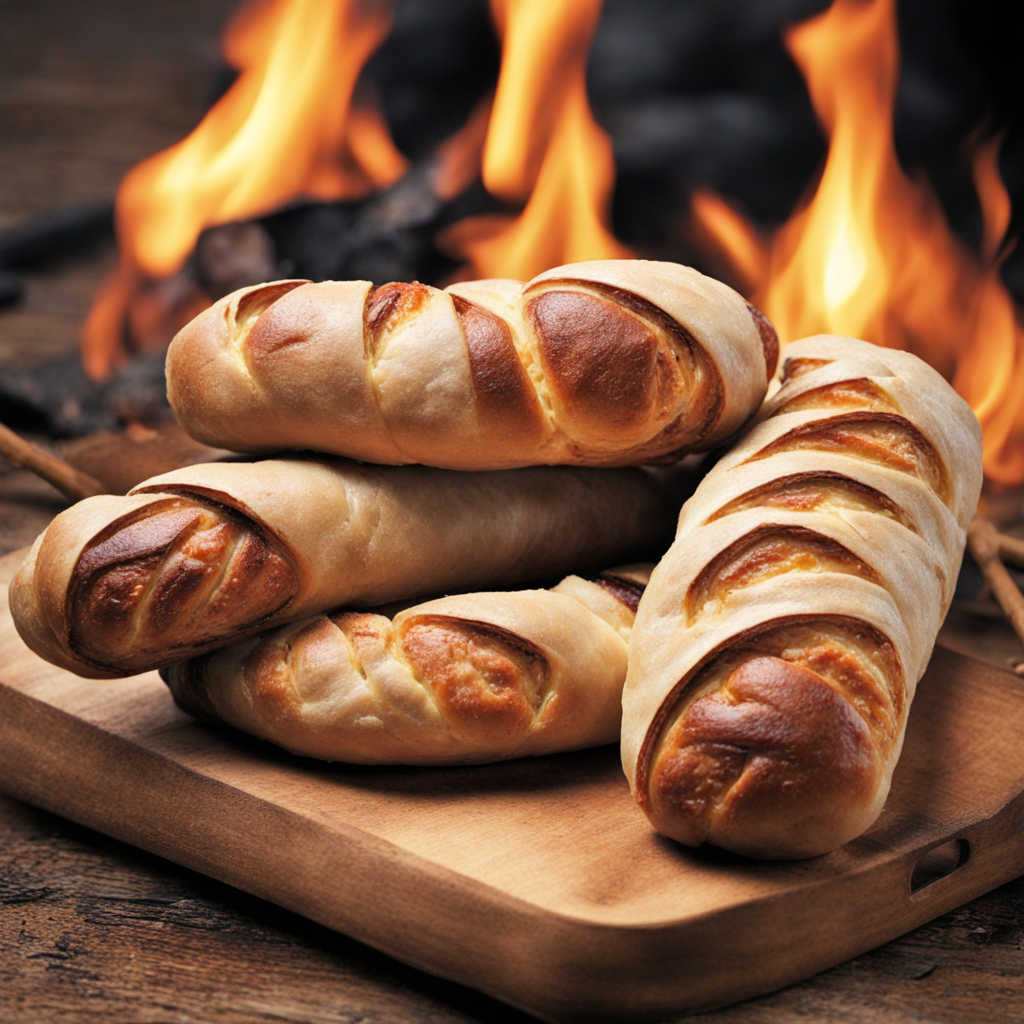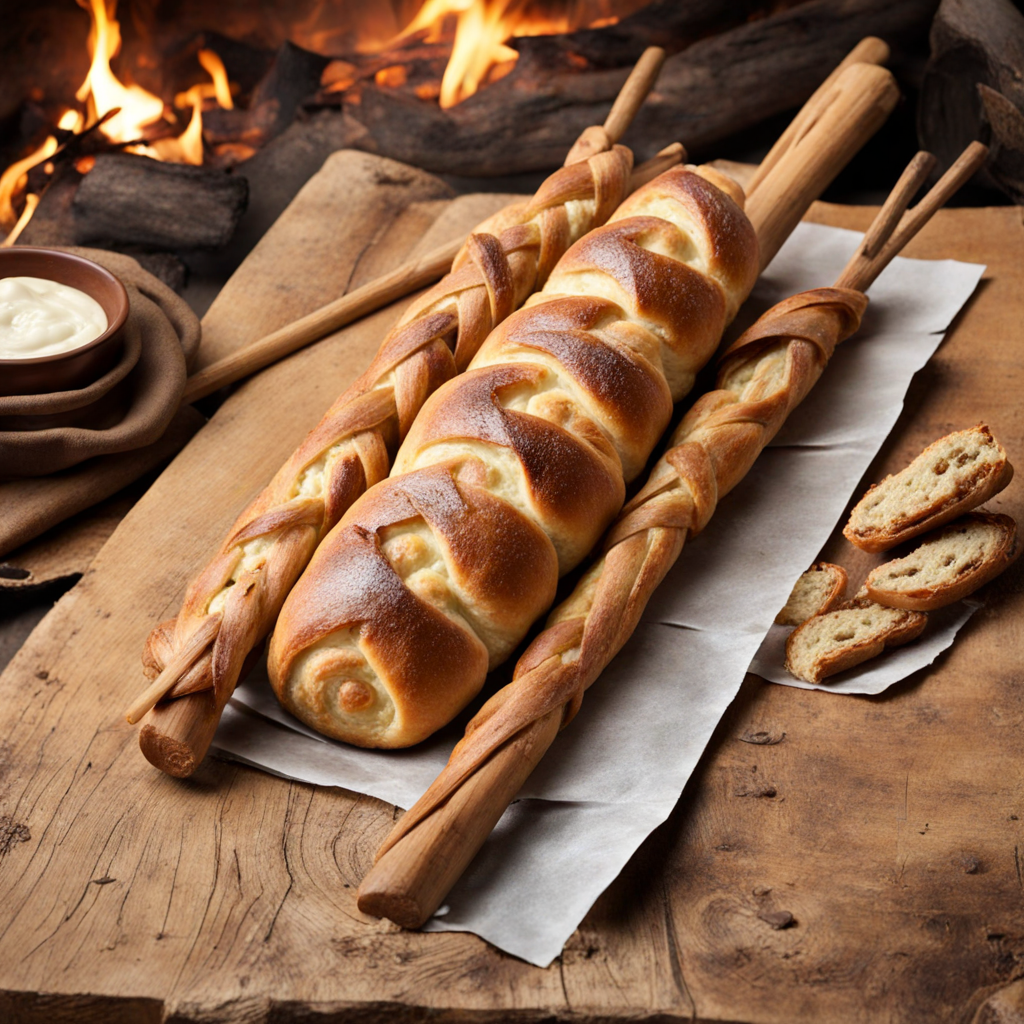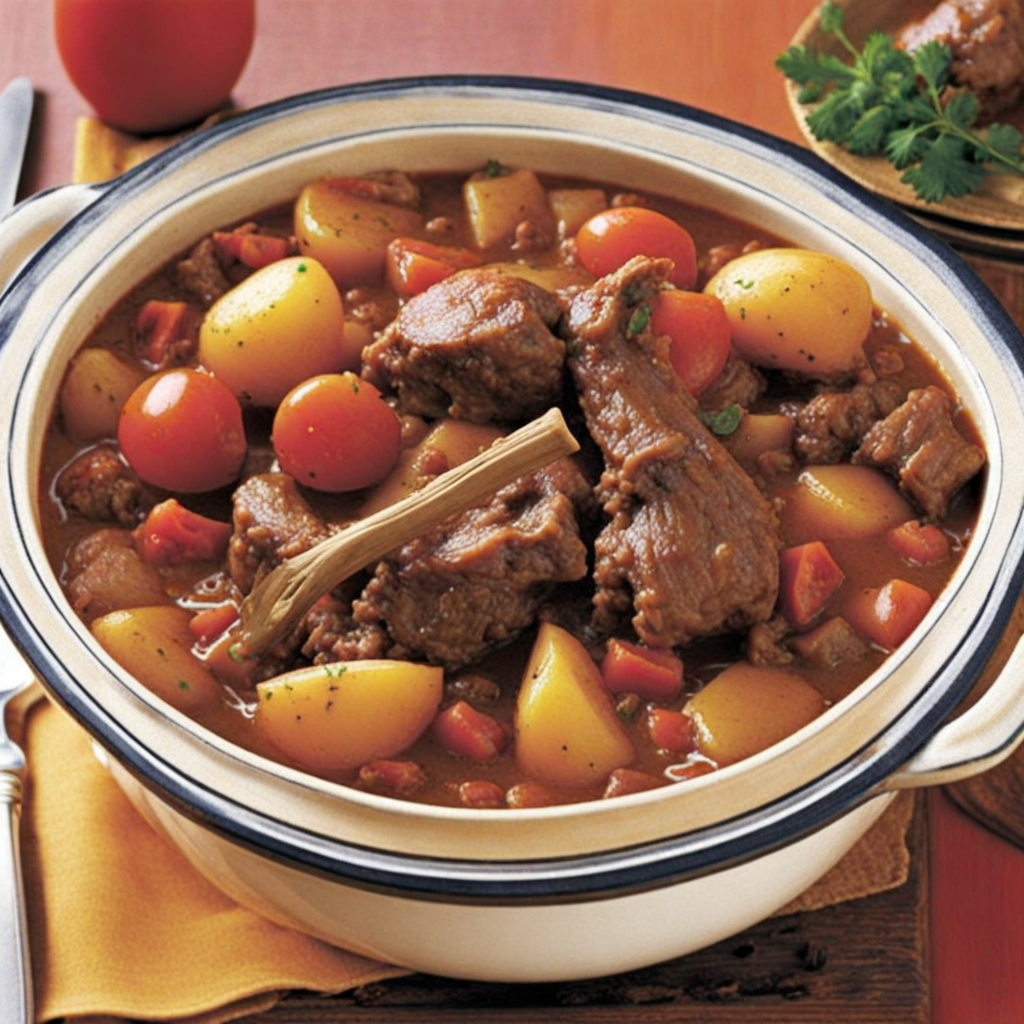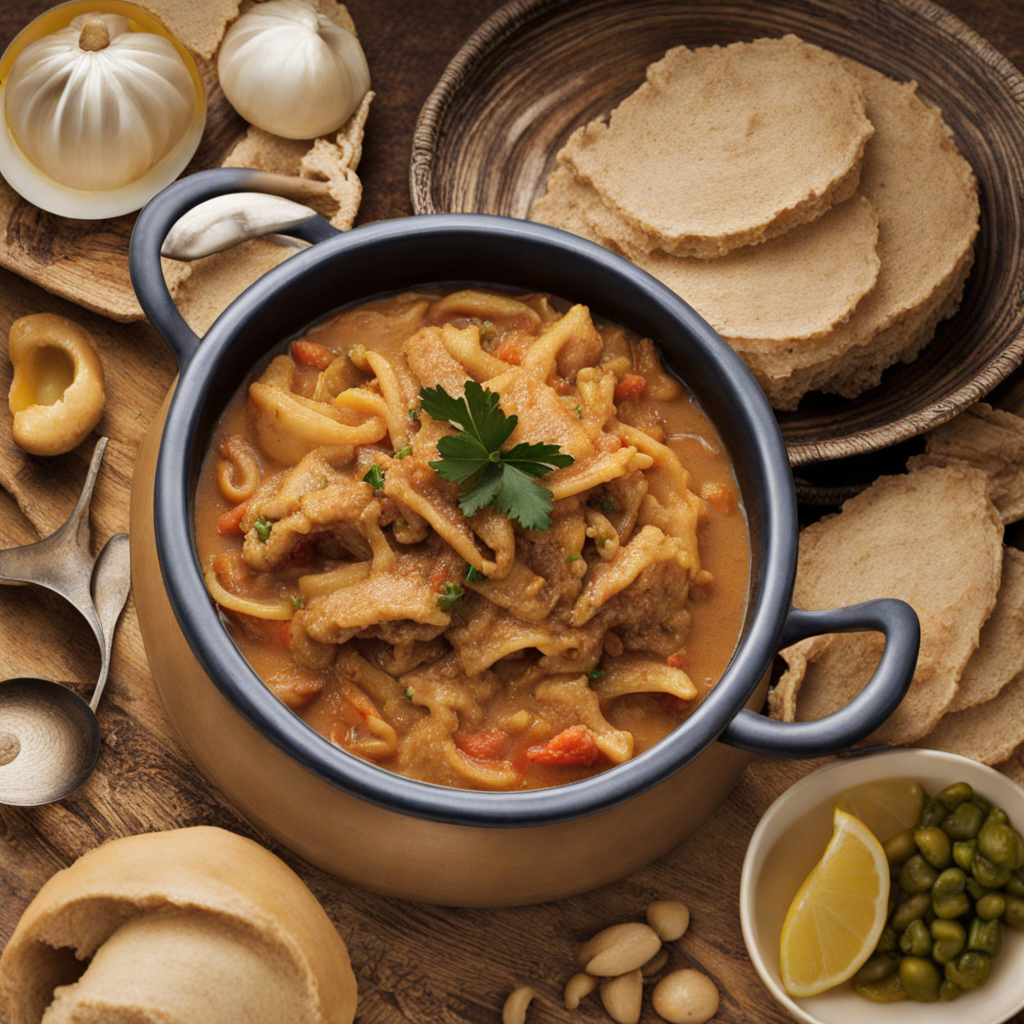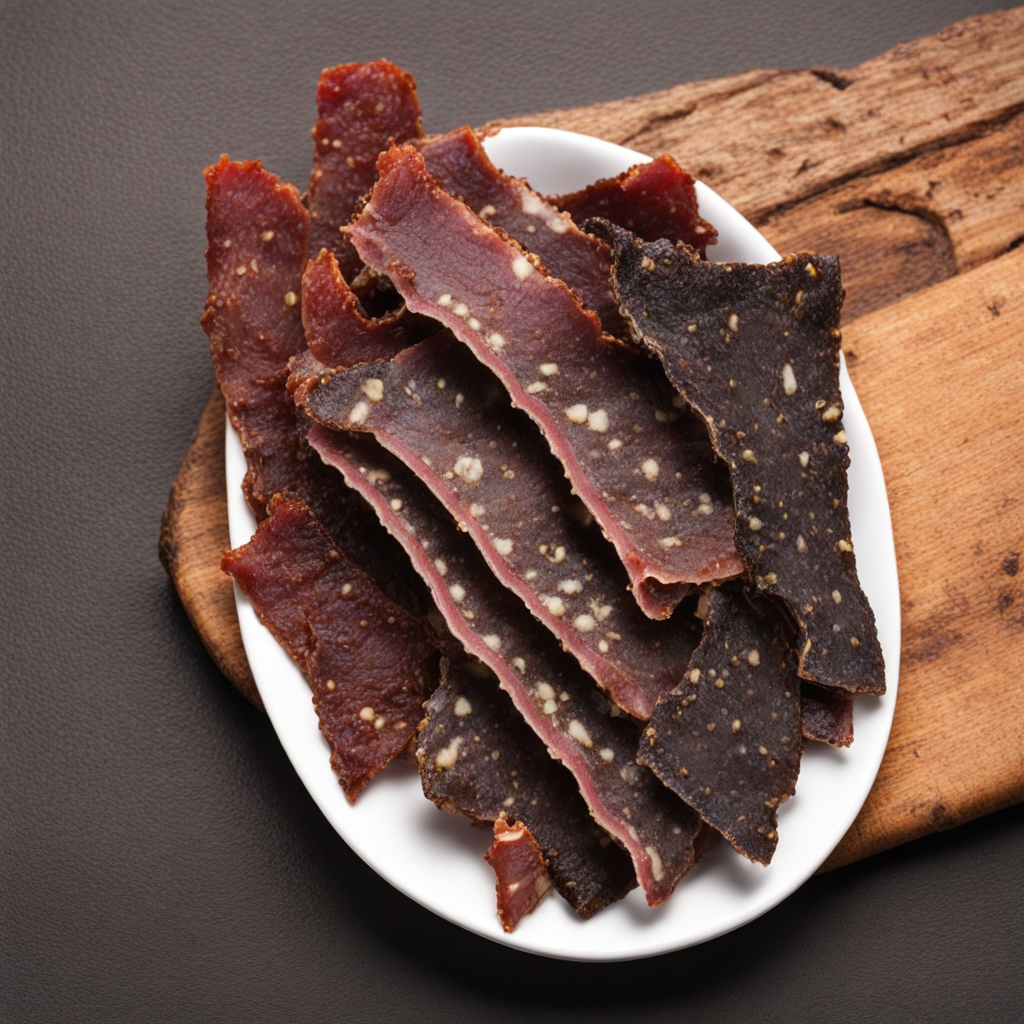Stokbrood
Stokbrood, a delightful South African treat, is a simple yet satisfying bread that is traditionally cooked over an open fire. This rustic delicacy consists of a soft, doughy texture that becomes golden brown and slightly crispy on the outside while remaining fluffy on the inside. The dough is typically made from basic ingredients like flour, water, salt, and yeast, which come together to create a versatile base that can be enjoyed in various ways. The name 'Stokbrood' translates to 'stick bread,' as the dough is wrapped around a long stick and roasted until perfectly cooked, making it a popular choice for camping and outdoor gatherings. One of the most appealing aspects of Stokbrood is its adaptability; it can be enjoyed plain, or you can elevate its flavor profile by adding herbs, cheese, or spices to the dough before cooking. Additionally, it pairs wonderfully with a wide array of toppings such as butter, jam, or even savory spreads. The aroma of bread baking over a campfire is an experience in itself, creating an inviting atmosphere that brings people together. As you break off a piece of the warm, freshly baked Stokbrood, you can savor the comforting taste that evokes a sense of nostalgia and communal bonding. Stokbrood is not only a culinary delight but also a cultural experience, often enjoyed in social settings where friends and family gather to share stories and laughter. The act of cooking Stokbrood over an open flame creates a sense of connection with nature and the outdoors, making it a cherished tradition in South African cuisine. Whether enjoyed as a snack or as part of a larger meal, Stokbrood offers a unique taste that is sure to captivate food lovers seeking to explore new flavors and culinary experiences.
How It Became This Dish
Stokbrood: The Story of South Africa's Beloved Bread on a Stick In the heart of South Africa, where the sun sets in hues of orange and purple over vast landscapes, a culinary tradition has been woven into the fabric of social gatherings and outdoor adventures: Stokbrood. This simple yet delightful bread on a stick represents not just a tasty treat but also a rich tapestry of cultural significance, historical evolution, and communal bonding that spans generations. Origins of Stokbrood Stokbrood, which translates to "stick bread" in Afrikaans, is believed to have its roots in the early Dutch settlers of the Cape Colony in the 17th century. These settlers, known as the Cape Dutch, brought with them various culinary traditions from Europe, including bread-making techniques. However, it was the unique South African environment that shaped the evolution of these techniques into something distinctly local. The practice of cooking bread over an open fire likely evolved from the need for sustenance during long journeys or while camping in the rugged South African wilderness. Stokbrood is typically made from a simple dough, often consisting of flour, water, yeast, and a pinch of salt. This dough is wrapped around a green twig or stick and roasted over an open flame, resulting in a crusty exterior and soft, warm interior. The act of cooking bread in this way was not merely about nourishment; it was a communal activity that brought families and friends together. Cultural Significance Stokbrood is more than just a snack; it is steeped in cultural significance and symbolism. In South Africa, where diverse cultural groups coexist, Stokbrood serves as a unifying dish. It transcends ethnic boundaries, appealing to Afrikaans, English-speaking communities, and indigenous groups alike. Often associated with outdoor activities, such as hikes or family gatherings, Stokbrood has become a staple treat during braais (barbecues) and picnics. The simplicity of Stokbrood allows for endless variations, making it adaptable to the tastes and preferences of different communities. Some people might enjoy it with a sprinkle of cinnamon and sugar, while others prefer savory options, adding herbs or cheese to the dough before roasting. This versatility reflects the broader South African culinary landscape, where influences from indigenous cultures, Dutch, Indian, and Malay cuisines come together to create a unique gastronomic identity. The Development Over Time As South African society evolved through colonization, apartheid, and the eventual democratic transition, so too did the culinary landscape. Stokbrood remained a beloved dish, but its context shifted. In the post-apartheid era, there was a renewed interest in traditional foods as a way to celebrate cultural heritage and foster unity among the diverse population. Stokbrood emerged as a symbol of nostalgia, evoking memories of simpler times spent in the company of loved ones. With the rise of the outdoor lifestyle, fueled by a growing interest in nature and adventure tourism, Stokbrood has found new life in modern South African cuisine. It is now not only a popular choice at family gatherings but also at campsites, festivals, and outdoor markets. Food vendors often offer Stokbrood alongside other traditional dishes, showcasing its adaptability and timeless appeal. In the 21st century, social media has played a significant role in popularizing Stokbrood beyond South Africa's borders. Food bloggers and influencers share mouthwatering images and recipes, inviting international audiences to experience this delightful dish. As a result, Stokbrood has gained recognition as a quintessential South African snack, celebrated for its simplicity and the communal spirit it embodies. Stokbrood in Contemporary South Africa In contemporary South Africa, Stokbrood is often made with a variety of flours, including whole wheat, rye, or even gluten-free alternatives, reflecting the growing awareness of dietary preferences and health consciousness. Some innovative cooks experiment with sweet variations, incorporating chocolate chips or dried fruits into the dough, while others explore savory options that include bacon, cheese, or fresh herbs. Stokbrood has also found its place in culinary tourism, with various establishments offering workshops where participants can learn the art of making this traditional bread. These experiences often include storytelling elements, connecting participants with the history and cultural significance of the dish while providing hands-on learning opportunities. Moreover, the rise of food sustainability movements has encouraged home cooks to embrace traditional methods of food preparation, including outdoor cooking. Stokbrood aligns perfectly with these ideals, as it requires minimal ingredients and fosters a connection to nature. It embodies the essence of slow food, inviting people to engage in the process of cooking and sharing meals in a way that is mindful and respectful of the environment. Conclusion Stokbrood is more than just a delicious bread on a stick; it is a living testament to South Africa's rich culinary heritage and cultural diversity. Its journey from the early Dutch settlers to contemporary South African society illustrates how food can serve as a bridge between different cultures and generations. The communal aspect of making and sharing Stokbrood encapsulates the spirit of togetherness that is central to South African life. As Stokbrood continues to evolve, it remains a cherished symbol of connection, nostalgia, and celebration. Whether enjoyed around a campfire, at a family gathering, or as part of a culinary adventure, Stokbrood will always be a beloved staple in the hearts and homes of South Africans, reminding them of the simple joys of life and the power of food to bring people together.
You may like
Discover local flavors from South Africa


